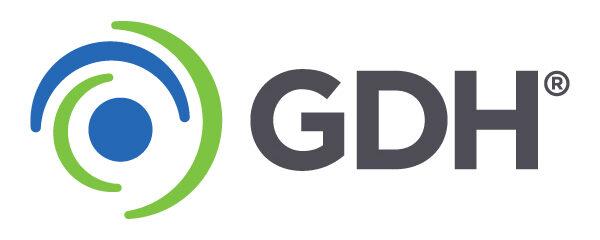Breaking into IT: How to Gain Experience Without a Formal Degree
Think you need a computer science degree to land a job in IT? Think again. The tech industry is changing, shifting its focus from traditional educational credentials to practical skills and hands-on experience.
With organizations like Google, Apple, and IBM lowering their degree requirements for many positions, the pathway to a thriving IT career has never been more accessible.
In this blog, we’ll explore actionable strategies to gain IT experience, build a stand-out resume, and leverage professional networks—even if you lack a formal degree. d
Whether you’re looking to break into IT for the first time or make a career pivot, this guide will provide the tools and insights you need to succeed.
Why Many IT Jobs Don’t Require Degrees

Busting Myths About IT Degrees
The notion that a degree is a prerequisite for an IT career is one of the biggest misconceptions in the industry. While higher education can be helpful, many companies are now looking for demonstrable skills rather than academic accolades.
The rise of alternative learning platforms and certifications has democratized access to IT roles, allowing candidates from non-traditional backgrounds to prove their capabilities.
According to a 2024 CompTIA jobs report, nearly 50% of IT roles in the United States do not list a four-year degree as a mandatory requirement. And more and more IT jobs are requiring a high school education only. This trend is even more pronounced in startups and tech-forward companies that prioritize innovation and problem-solving abilities.
Hiring managers often state that a portfolio showcasing completed projects or certifications can be just as persuasive as a formal education.
Companies That Prioritize Skills Over Degrees
Major tech players and startups alike are leading the charge in redefining hiring criteria:
- Google. Through its Google Career Certificates program, the company actively recruits talent based on certifications and skills rather than degrees.
- IBM. IBM removed degree requirements from 50% of its job postings, emphasizing real-world skills instead.
- Apple. Tim Cook has often highlighted that many employees at Apple don’t hold four-year degrees but instead possess the technical know-how to get the job done.
This trend is not limited to tech giants. Industries like healthcare IT, financial services, and transportation and logistics are also embracing skill-based hiring. This shift creates an opportunity for aspiring IT professionals to stand out by focusing on practical skills and certifications tailored to industry needs.
Top Ways to Gain IT Experience Without a Degree

Entry-Level IT Certifications to Boost Your Credibility
Certifications are one of the fastest and most effective ways to gain credibility in the IT industry without a formal degree. They provide a structured path for learning essential skills, demonstrate your expertise to potential employers, and serve as a stepping stone to more advanced roles.
Here are some of the most popular entry-level certifications for aspiring IT professionals:
- CompTIA A+. A foundational certification covering hardware, software, troubleshooting, and basic network skills. It’s often the first certification for individuals new to IT.
- Google IT Support Professional certificate. Offered via Coursera, this program is tailored for beginners, teaching skills like network configuration, system administration, and security basics.
- Microsoft Fundamentals certifications. Ideal for entry-level professionals, these certifications (e.g., Azure Fundamentals) provide a solid understanding of cloud computing and other Microsoft technologies.
- AWS Certified Cloud Practitioner. Perfect for those interested in cloud computing, this certification covers fundamental cloud concepts and is a stepping stone to more advanced AWS credentials.
These certifications are widely recognized and typically cost a fraction of what a degree would. Many also come with robust study materials, online courses, and practice exams to help you succeed.
Contributing to Open-Source Projects and Building a Portfolio
One of the best ways to gain hands-on experience is by contributing to open-source projects. Platforms like GitHub and GitLab host thousands of collaborative projects that welcome contributors of all skill levels.
Projects like these let you gain real-world experience and build a portfolio at the same time that you can showcase to potential employers.
Here’s how to get started:
- Find relevant projects. Search for projects that align with your interests or the skills you want to develop. Use GitHub’s Explore feature to browse by technology or industry.
- Start small. Begin by tackling beginner-friendly issues labeled as “good first issue” or “help wanted.” This allows you to familiarize yourself with the project and its workflow.
- Document your work. Maintain a portfolio of your contributions, including links to pull requests, issues you resolved, and any enhancements you made.
A strong portfolio demonstrates your ability to solve real-world problems and work collaboratively, which are critical skills in the IT industry.
Freelance Work, Internships, and Volunteering

Gaining experience through freelance projects or internships can help you build both technical and professional skills. Even short-term roles or small-scale freelance jobs can significantly boost your resume and confidence.
- Freelancing platforms. Websites like Upwork, Fiverr, and Toptal connect freelancers with clients looking for IT expertise. You can offer services like troubleshooting, web development, or software installations, gradually building your reputation and earning testimonials.
- Internships. While internships are often associated with students, many companies offer opportunities for career changers or individuals without degrees. Platforms like LinkedIn and Indeed frequently list internships tailored to aspiring IT professionals.
- Volunteer work. Offering your skills to nonprofits, community organizations, or open-source projects is another way to gain practical experience. This can help build your portfolio while demonstrating your initiative and dedication to prospective employers.
By combining certifications, open-source contributions, and real-world experience, you can create a compelling narrative for your IT career—one that proves your value to employers without requiring a formal degree.
How to Build a Stand-Out IT Resume
Highlight Self-Taught Skills
One of the key ways to overcome the absence of a degree is to showcase self-taught skills prominently on your resume. Employers value initiative, and a resume that highlights your dedication to learning can set you apart from other candidates.
Here’s how to effectively highlight your self-taught IT skills:
- List relevant technical skills. Include a dedicated skills section on your resume, listing tools, programming languages, and platforms you’ve mastered, such as Python, SQL, or cloud services like AWS.
- Showcase your learning sources. Mention the courses, tutorials, or certifications that helped you gain expertise. For example:
- “Completed Python for Everybody by the University of Michigan on Coursera.”
- “Achieved certification in Google IT Support Professional Certificate.”
- Emphasize results. Whenever possible, link your skills to tangible outcomes. For example:
- “Built and deployed a personal budgeting app using Python and Flask, with over 500 users.”
Showcase Real-World Project Experience

Employers are looking for candidates who can solve problems and deliver results, and a resume featuring real-world projects can carry significant weight.
Whether through open-source contributions, freelance work, or personal projects, your hands-on experience can speak volumes.
- Create a dedicated section. Include a section titled “Projects” on your resume, where you can detail key initiatives you’ve undertaken.
- Use metrics and results. Quantify the impact of your projects where possible. For example:
- “Developed an inventory management system for a local business, reducing tracking errors by 30%.”
- “Contributed to an open-source web application, increasing user performance by 15% through optimized code.”
- Include links. Provide links to project repositories on platforms like GitHub or portfolios hosted on personal websites.
Networking for IT Opportunities
Using LinkedIn and Other Professional Platforms
Networking is a critical component of breaking into IT, and LinkedIn serves as a powerful tool for connecting with industry professionals, finding job opportunities, and showcasing your skills.
- Optimize your profile. Use a professional photo, craft a strong headline, and highlight your technical expertise and certifications in your summary.
- Connect strategically. Follow recruiters and hiring managers, and join LinkedIn groups focused on IT career growth.
- Engage with content. Share projects, comment on industry posts, and participate in discussions to build visibility.
Joining Online and Local IT Communities
Explore platforms like Reddit (e.g., r/ITCareerQuestions), Stack Overflow, and Meetup to connect with professionals, ask questions, and participate in events like hackathons or workshops.
How GDH Can Help You Gain Valuable IT Experience

At GDH, whether you have a formal degree or you’ve taken an unconventional path, we value your skills, passion, and ability to solve real-world challenges.
Our expertise in IT staffing means we know what hiring managers are looking for, and we can help match your unique talents with opportunities tailored to your career goals. From entry-level roles to specialized IT positions, we work with some of the most innovative companies in technology, healthcare, financial services, and beyond.
If you’re ready to break into IT or take the next step in your career, GDH is here to support you every step of the way. Explore our IT job board for current openings, or reach out to one of our recruiters to discuss how we can help you achieve your goals. Your IT journey starts here, and we’re excited to help you succeed.








